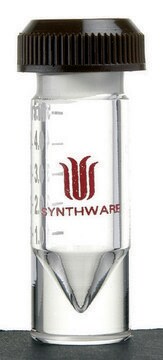03353575910
Roche
DIG Oligonucleotide 3′-End Labeling Kit, 2nd generation
sufficient for 25 labeling reactions (100 pmol of oligonucleotides per assay; 1 ug of a 30-mer oligonucleotide), storage condition avoid repeated freeze/thaw cycles
About This Item
Empfohlene Produkte
Verwendung
sufficient for 25 labeling reactions (100 pmol of oligonucleotides per assay; 1 ug of a 30-mer oligonucleotide)
Qualitätsniveau
Hersteller/Markenname
Roche
Grünere Alternativprodukt-Eigenschaften
Designing Safer Chemicals
Learn more about the Principles of Green Chemistry.
sustainability
Greener Alternative Product
Grünere Alternativprodukt-Kategorie
, Aligned
Versandbedingung
dry ice
Allgemeine Beschreibung
Anwendung
DIG-labeled oligonucleotides has been used in a variety of hybridization techniques:
- dot/slot blots
- colony/ plaque hybridizations
- Southern blots/ northern blots
- in situ hybridizations
Leistungsmerkmale und Vorteile
- Fast hybridization kinetics, due to the small size of oligonucleotides
- Single-stranded probes, no renaturation during hybridization
- Sequence can be designed according to the experiment
- Specially suited for in situ hybridization; due to their small size, the oligonucleotides readily diffuse into fixed tissues and cells
Verpackung
Qualität
Prinzip
Angaben zur Herstellung
Working concentration: Oligonucleotides: 100 pmol
Up to 100 pmol (1 μg of a 30-mer) oligonucleotide can be labeled in a single standard labeling reaction.
Sample Materials
Oligonucleotides of a length from 14 to 100 nucleotides, purified by HPLC or gel electrophoresis
Lagerung und Haltbarkeit
Sonstige Hinweise
Nur Kit-Komponenten
- Reaction Buffer 5x concentrated
- CoCl<sub>2</sub> Solution 25 mM
- DIG-ddUTP Solution 1 mM
- Recombinant Terminal Transferase 400 U/μl
- Control Oligonucleotide, unlabeled 20 pmol/μl
- Oligonucleotide, DIG-ddUTP labeled 2.5 pmol/μl
- Control DNA, 2.5 pmol/μl pUC 18 DNA, supercoiled
- Glycogen Solution 20 mg/ml
- DNA Dilution Buffer, 50 μg/ml fish sperm DNA
Signalwort
Danger
Gefahreneinstufungen
Acute Tox. 4 Inhalation - Acute Tox. 4 Oral - Aquatic Chronic 2 - Carc. 1B Inhalation - Repr. 1B
Lagerklassenschlüssel
6.1D - Non-combustible, acute toxic Cat.3 / toxic hazardous materials or hazardous materials causing chronic effects
WGK
WGK 3
Flammpunkt (°F)
does not flash
Flammpunkt (°C)
does not flash
Analysenzertifikate (COA)
Suchen Sie nach Analysenzertifikate (COA), indem Sie die Lot-/Chargennummer des Produkts eingeben. Lot- und Chargennummern sind auf dem Produktetikett hinter den Wörtern ‘Lot’ oder ‘Batch’ (Lot oder Charge) zu finden.
Besitzen Sie dieses Produkt bereits?
In der Dokumentenbibliothek finden Sie die Dokumentation zu den Produkten, die Sie kürzlich erworben haben.
Kunden haben sich ebenfalls angesehen
Artikel
Digoxigenin (DIG) labeling methods and kits for DNA and RNA DIG probes, random primed DNA labeling, nick translation labeling, 5’ and 3’ oligonucleotide end-labeling.
Markierungsmethoden mit Digoxigenin (DIG) und Kits für DNA- und RNA-DIG-Sonden, DNA-Markierung durch Random Primer, Nick-Translationsmarkierung, 5‘- und 3‘-Endmarkierung von Oligonukleotiden.
Unser Team von Wissenschaftlern verfügt über Erfahrung in allen Forschungsbereichen einschließlich Life Science, Materialwissenschaften, chemischer Synthese, Chromatographie, Analytik und vielen mehr..
Setzen Sie sich mit dem technischen Dienst in Verbindung.















